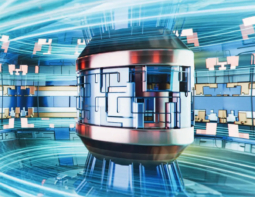Physicists in the US have developed a technique that may help to make a more accurate measurement of the Boltzmann constant, a fundamental value that relates the kinetic energy of a group of particles to their overall temperature.
The technique could mark another step on the road to redefine the Kelvin unit of temperature. Currently, the International Committee for Weights and Measures (CIPM) in Paris — the hub of the metrology community — defines the Kelvin as 1/273.16 of the temperature difference between absolute zero and the triple point of pure water (roughly 0 °C) at a certain pressure. However, the CIPM would prefer to define the Kelvin, along with other SI units, in terms of fundamental constants. The Kelvin could be obtained from the second, which is already known to about one part in 1016, and the Boltzmann constant, kB.
The best current technique for determining kB involves measuring the speed of sound in argon gas, which gives a measurement to within two parts per million. Other techniques include measuring the dielectric constant of a gas; the radiation from a black body; and the absorption of laser light by molecules. The CIPM would like to combine several such techniques to rule out systematic errors in the final value of kB.
Samuel Benz and colleagues at the National Institute of Standards and Technology (NIST) have developed another technique, known as Johnson-noise thermometry (JNT). “There is a lot of research worldwide with many different approaches, all trying to improve measurements of the Boltzmann constant,” says Benz. “Our approach is the only ‘electrical’ approach.”
Johnson noise is white noise generated by the random motion of electrons in all electrical components that have resistance, and has a magnitude that can be predicted directly from the component’s resistance and temperature, and kB. To get kB — or, more precisely, a ratio of kB to Planck’s constant, h, which is known with much less uncertainty — the Johnson noise must be compared with another, reliable noise source at the same temperature. The development made by Benz’s team is the realization of such a reliable noise source — a quantum voltage noise source (QVNS) that comprises thousands of superconducting “Josephson junctions”.
Using their JNT-QVNS technique, the NIST researchers have measured the ratio of kB to h with an uncertainty of 25 ×10–6 (IEEE Trans. Inst. Meas. to be submitted). Although this is less accurate than other techniques, the researchers think that they should be able to reduce the uncertainty to 6 ×10–6 in the future, which would make it an attractive method for determining the Boltzmann constant for the CIPM.
The CIPM are currently planning to redefine four of the SI units, including the Kelvin, by 2011.



